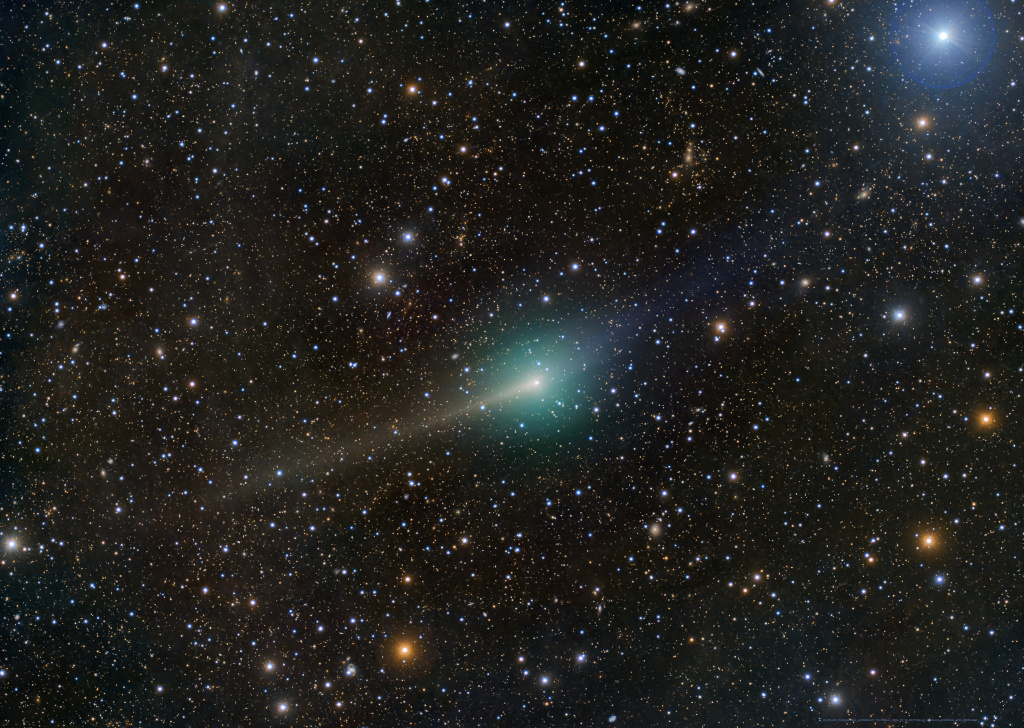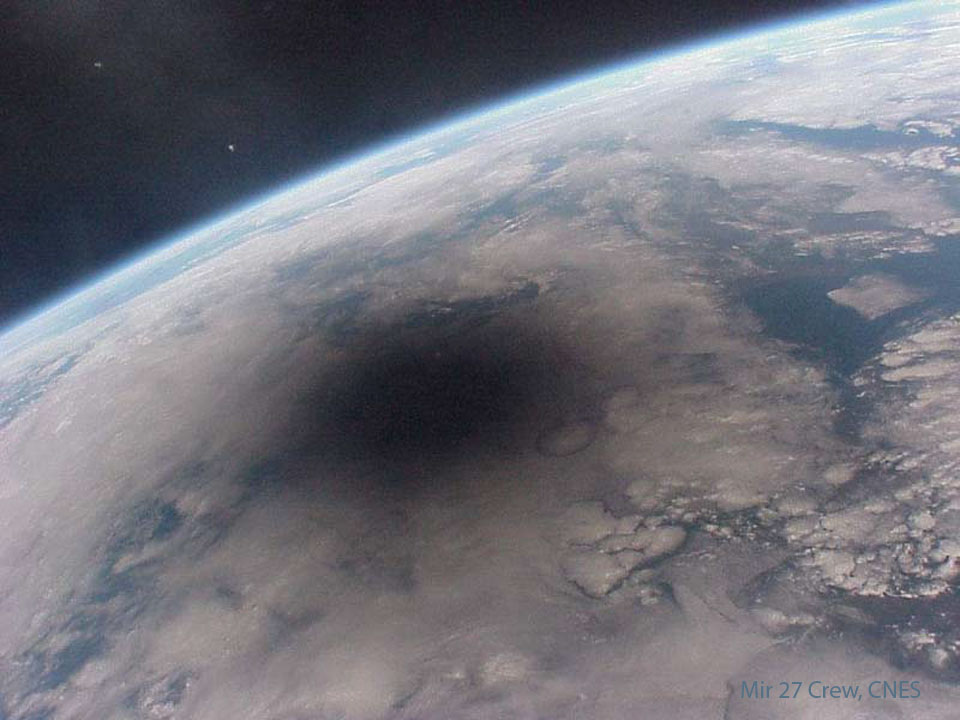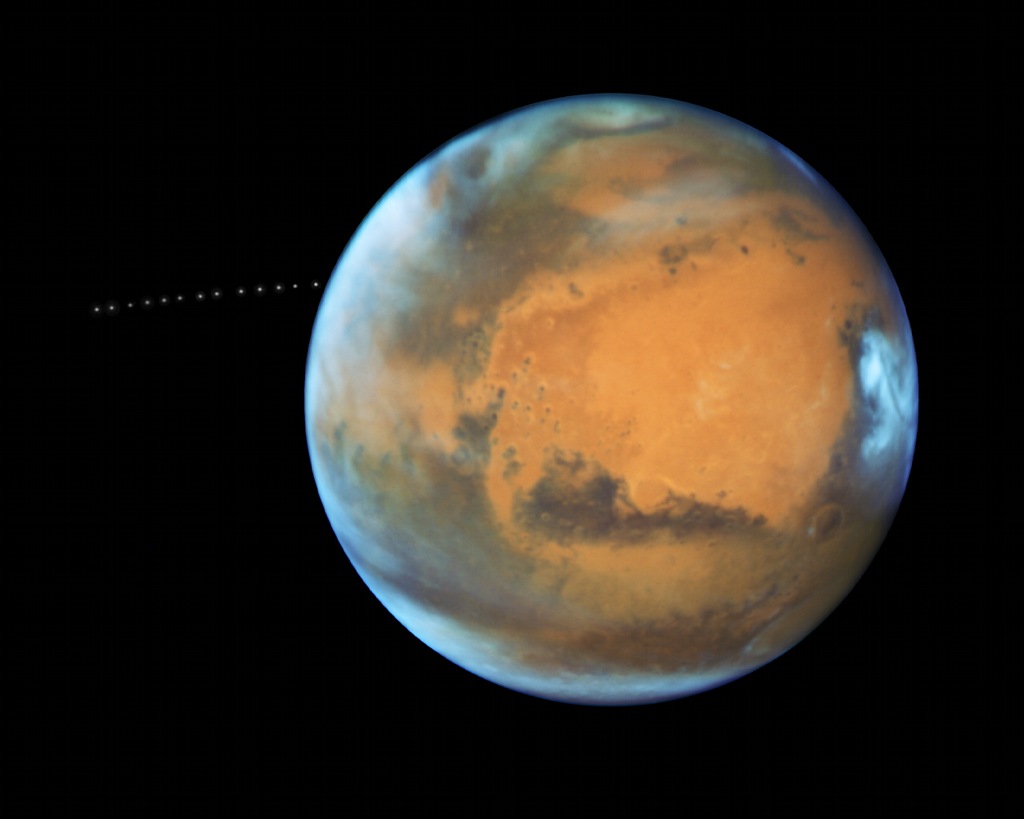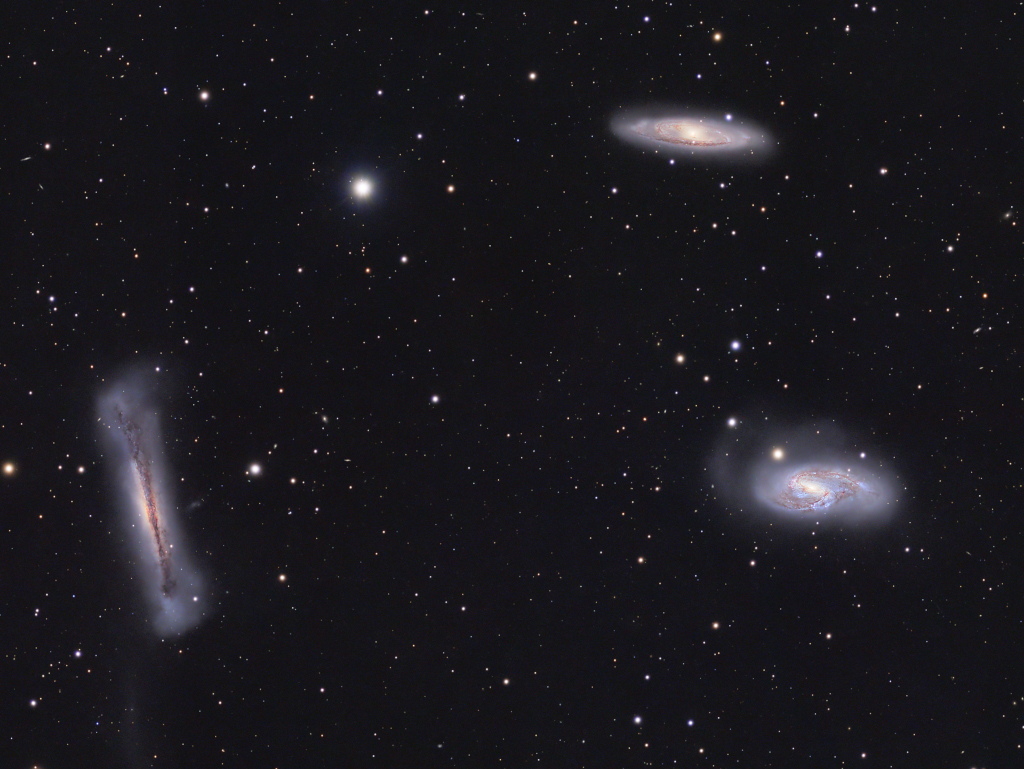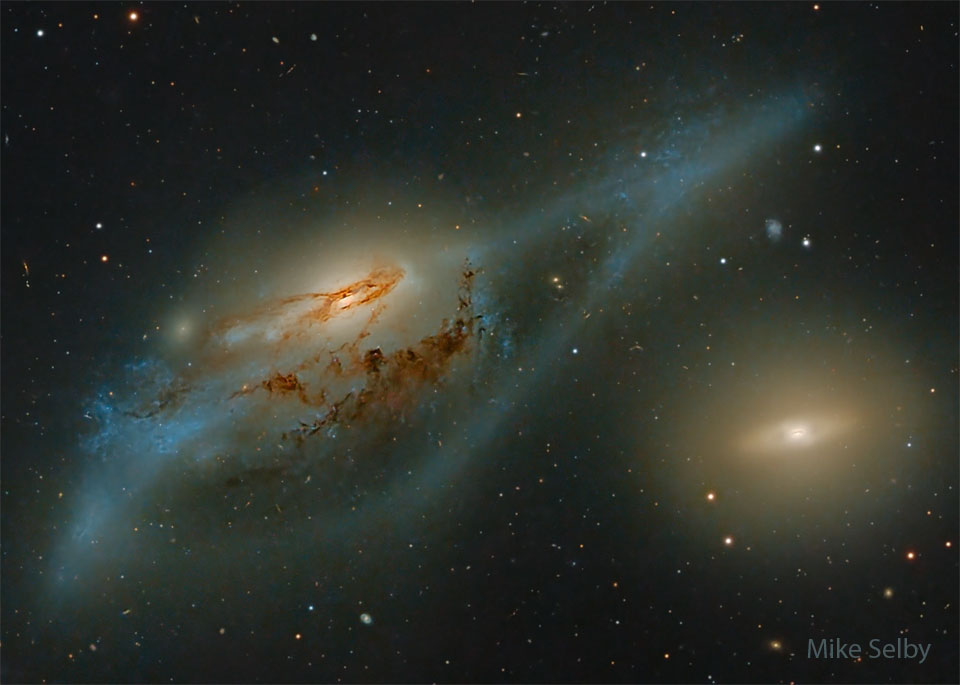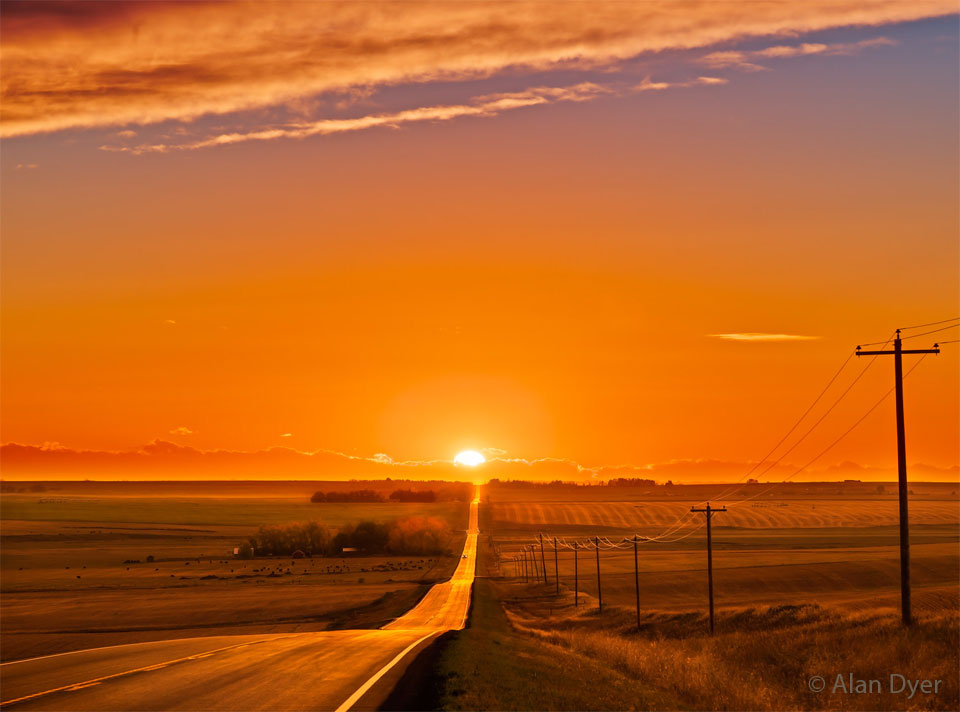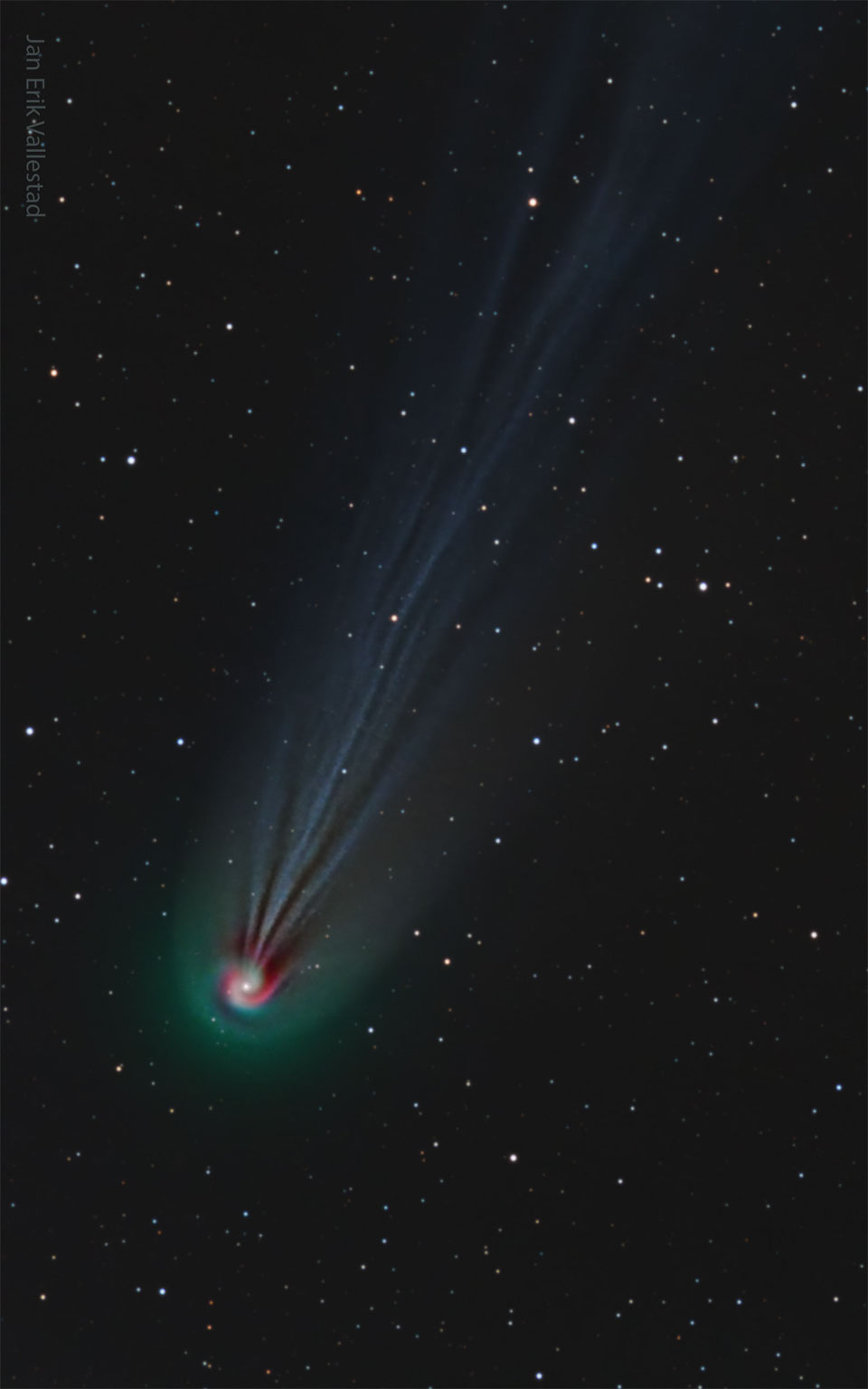Η Αστρονομική Εικόνα της Ημέρας από τη NASA
3I/ATLAS Flyby
26/12/2025
Attention grabbing interstellar visitor 3I/ATLAS made its not-so-close flyby of our fair planet on December 19 at a distance of 1.8 astronomical units. That's about 900 light-seconds. Still, this deep exposure captures the comet from another star system as it gently swept across a faint background of stars in the constellation Leo about 4 days earlier, on the night of December 15. Though faint, colors emphasized in the image data, show off the comet's yellowish dust tail and bluish ion tail along with a greenish tinged coma. And even while scrutinized by arrays of telescopes and spacecraft from planet Earth, 3I ATLAS is headed out of the Solar System. It's presently moving outward along a hyperbolic trajectory at about 64 kilometers per second relative to the Sun, too fast to be bound the Sun's gravity.
Copyright: Dan Bartlett
Προηγούμενες Αστρονομικές Εικόνες της Ημέρας από τη NASA
Sonified: The Jellyfish Nebula Supernova Remnant
25/03/2024
What does a supernova remnant sound like? Although sound is a compression wave in matter and does not carry into empty space, interpretive sound can help listeners appreciate and understand a visual image of a supernova remnant in a new way. Recently, the Jellyfish Nebula (IC 443) has been sonified quite creatively. In the featured sound-enhanced video, when an imaginary line passes over a star, the sound of a drop falling into water is played, a sound particularly relevant to the nebula's aquatic namesake. Additionally, when the descending line crosses gas that glows red, a low tone is played, while green sounds a middle tone, and blue produces a tone with a relatively high pitch. Light from the supernova that created the Jellyfish Nebula left approximately 35,000 years ago, when humanity was in the stone age. The nebula will slowly disperse over the next million years, although the explosion also created a dense neutron star which will remain indefinitely.
Copyright: NASA
Looking Back at an Eclipsed Earth
24/03/2024
Here is what the Earth looks like during a solar eclipse. The shadow of the Moon can be seen darkening part of Earth. This shadow moved across the Earth at nearly 2000 kilometers per hour. Only observers near the center of the dark circle see a total solar eclipse - others see a partial eclipse where only part of the Sun appears blocked by the Moon. This spectacular picture of the 1999 August 11 solar eclipse was one of the last ever taken from the Mir space station. The two bright spots that appear on the upper left are thought to be Jupiter and Saturn. Mir was deorbited in a controlled re-entry in 2001. A new solar eclipse will occur over North America in about two weeks.
Copyright: CNES
Ares 3 Landing Site: The Martian Revisited
23/03/2024
This close-up from the Mars Reconnaissance Orbiter's HiRISE camera shows weathered craters and windblown deposits in southern Acidalia Planitia. A striking shade of blue in standard HiRISE image colors, to the human eye the area would probably look grey or a little reddish. But human eyes have not gazed across this terrain, unless you count the eyes of NASA astronauts in the sci-fi novel, "The Martian", by Andy Weir. The novel chronicles the adventures of Mark Watney, an astronaut stranded at the fictional Mars mission Ares 3 landing site, corresponding to the coordinates of this cropped HiRISE frame. For scale, Watney's 6-meter-diameter habitat at the site would be about 1/10th the diameter of the large crater. Of course, the Ares 3 landing coordinates are only about 800 kilometers north of the (real life) Carl Sagan Memorial Station, the 1997 Pathfinder landing site.
Copyright: NASA
Phobos: Moon over Mars
22/03/2024
A tiny moon with a scary name, Phobos emerges from behind the Red Planet in this timelapse sequence from the Earth-orbiting Hubble Space Telescope. Over 22 minutes the 13 separate exposures were captured near the 2016 closest approach of Mars to planet Earth. Martians have to look to the west to watch Phobos rise, though. The small moon is closer to its parent planet than any other moon in the Solar System, about 3,700 miles (6,000 kilometers) above the Martian surface. It completes one orbit in just 7 hours and 39 minutes. That's faster than a Mars rotation, which corresponds to about 24 hours and 40 minutes. As a result, seen from the surface of Mars speeding Phobos rises above the western horizon 2 times in a Martian day. Still, Phobos is doomed.
Copyright: NASA
The Leo Trio
21/03/2024
This popular group leaps into the early evening sky around the March equinox and the northern hemisphere spring. Famous as the Leo Triplet, the three magnificent galaxies found in the prominent constellation Leo gather here in one astronomical field of view. Crowd pleasers when imaged with even modest telescopes, they can be introduced individually as NGC 3628 (left), M66 (bottom right), and M65 (top). All three are large spiral galaxies but tend to look dissimilar, because their galactic disks are tilted at different angles to our line of sight. NGC 3628, also known as the Hamburger Galaxy, is temptingly seen edge-on, with obscuring dust lanes cutting across its puffy galactic plane. The disks of M66 and M65 are both inclined enough to show off their spiral structure. Gravitational interactions between galaxies in the group have left telltale signs, including the tidal tails and warped, inflated disk of NGC 3628 and the drawn out spiral arms of M66. This gorgeous view of the region spans over 1 degree (two full moons) on the sky in a frame that covers over half a million light-years at the trio's estimated distance of 30 million light-years.
Copyright: Steve Cannistra
The Eyes in Markarian's Galaxy Chain
20/03/2024
Across the heart of the Virgo Galaxy Cluster lies a string of galaxies known as Markarian's Chain. Prominent in Markarian's Chain are these two interacting galaxies, NGC 4438 (left) and NGC 4435 - also known as The Eyes. About 50 million light-years away, the two galaxies appear to be about 100,000 light-years apart in this sharp close-up, but have likely approached to within an estimated 16,000 light-years of each other in their cosmic past. Gravitational tides from the close encounter have ripped away at their stars, gas, and dust. The more massive NGC 4438 managed to hold on to much of the material torn out in the collision, while material from the smaller NGC 4435 was more easily lost. The remarkably deep image of this crowded region of the universe also includes many more distant background galaxies.
Copyright: Mike Selby
A Picturesque Equinox Sunset
19/03/2024
What's that at the end of the road? The Sun. Many towns have roads that run east-west, and on two days each year, the Sun rises and sets right down the middle. Today, in some parts of the world (tomorrow in others), is one of those days: an equinox. Not only is this a day of equal night ("aequus"-"nox") and day time, but also a day when the sun rises precisely to the east and sets due west. Displayed here is a picturesque rural road in Alberta, Canada that runs approximately east-west. The featured image was taken during the September Equinox of 2021, but the geometry remains the same every year. In many cultures, this March equinox is taken to be the first day of a season, typically spring in Earth's northern hemisphere, and autumn in the south. Does your favorite street run east-west? Tonight, at sunset, you can find out with a quick glance.
Copyright: Alan Dyer, Amazingsky.com, TWAN
Comet Pons-Brooks' Swirling Coma
18/03/2024
A bright comet will be visible during next month's total solar eclipse. This very unusual coincidence occurs because Comet 12P/Pons-Brooks's return to the inner Solar System places it by chance only 25 degrees away from the Sun during Earth's April 8 total solar eclipse. Currently the comet is just on the edge of visibility to the unaided eye, best visible with binoculars in the early evening sky toward the constellation of the Fish (Pisces). Comet Pons-Brooks, though, is putting on quite a show for deep camera images even now. The featured image is a composite of three very specific colors, showing the comet's ever-changing ion tail in light blue, its outer coma in green, and highlights some red-glowing gas around the coma in a spiral. The spiral is thought to be caused by gas being expelled by the slowly rotating nucleus of the giant iceberg comet. Although it is always difficult to predict the future brightness of comets, Comet Pons-Brook has been particularly prone to outbursts, making it even more difficult to predict how bright it will actually be as the Moon moves in front of the Sun on April 8. Total Eclipse Info: 2024 Total Solar Eclipse from NASA
Copyright: Jan Erik Vallestad
Η Αστρονομική Εικόνα της Ημέρας από τη NASA (NASA Astronomy Picture of the Day) είναι μια δωρεάν υπηρεσία που παρέχει καθημερινά μια εντυπωσιακή εικόνα από το σύμπαν, την λήψη της οποίας έχει πραγματοποιήσει κάποιος από τους αστρονόμους της NASA ή από κάποιον από τους δορυφόρους ή τα τηλεσκόπια που η NASA λειτουργεί. Οι εικόνες που εμφανίζονται καλύπτουν μια ευρεία γκάμα από θέματα, συμπεριλαμβανομένων των αστερισμών, των γαλαξιών, των πλανητικών συστημάτων, των κομητών, των αστρικών σωμάτων και των παρατηρητηρίων. Κάθε εικόνα συνοδεύεται από μια σύντομη εξήγηση και πληροφορίες σχετικά με το τι παρατηρείται στην εικόνα.
